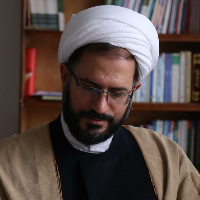Cultural Elements of Iranians Continuation
Pointing out the characteristics of the Iranian culture throughout history such as Iranianism, Religion, imperial system, cultural diversity, cultural tolerance, and cultural continuation, the writer believes that culture, despite changes that are innate to social phenomena, possesses a series of constant elements that are often refereed to as the “Spirit of Nations.” This paper intends to answer the essential question that how and through what mechanism has the Iranian culture, despite the presence of fertile grounds for disintegration, been able to preserve its solidity throughout time; what challenges has the Iranian identity been facing in the recent century, and what challenges and issues have the past social and political movements been trying to meet and resolve. In answer to these questions, by studying historical documents we can point out to this hypothesis that because of its geographical position and diversity, Iran has always had to deal with cultural diversity throughout history and thus grounds have always been prepared for the breakdown of the country’s social structure. On the other hand, spiritual individuality, with its two prominent qualities of belief in a monotheistic origin and a bright future, demands historical solidity. Hence, to overcome the challenge of “social solidity” and “breakdown”, the Iranians turned to the idea of “hakim-e hakam” that manifested itself in the imperial system of the country. By turning to this system, despite facing such major problems as the Hellenic Crisis, the Turkic Crisis, and the Arabic Crisis, the Iranian culture has managed to preserve its entirety and absorb and digest alien elements without loosing its Iranian nature. The most important crisis for the Iranian culture in the recent century has been dealing with the Western Modernity. Because of its inclination towards autocracy and lack of compatibility with environmental changes, the imperial system lost its ability in answering the historical demands of the Iranian nation which required the protection of the Iranian Spirit in its totality and thus gave way to the rise of puritan movements. The Iranian movements including the Constitutional and Islamic Revolutions generally rose to prominence with slogans such as “independence seeking”, “religious predominance”, and “anti-dictatorial positions” in reaction to the internal despotism and Western cultural invasion. This can be interpreted as the absorption and digestion of Western Modernity by a culture that is trying to preserve its Iranian essence just like the past 3000 years. The “Velai” system rooted in the Islamic Revolution is in fact a response to the historical Iranian demand requiring a “hakim-e hakam” who could be able to safeguard cultural diversity while at the same time protect religious principles and national identity of the country.
- حق عضویت دریافتی صرف حمایت از نشریات عضو و نگهداری، تکمیل و توسعه مگیران میشود.
- پرداخت حق اشتراک و دانلود مقالات اجازه بازنشر آن در سایر رسانههای چاپی و دیجیتال را به کاربر نمیدهد.



